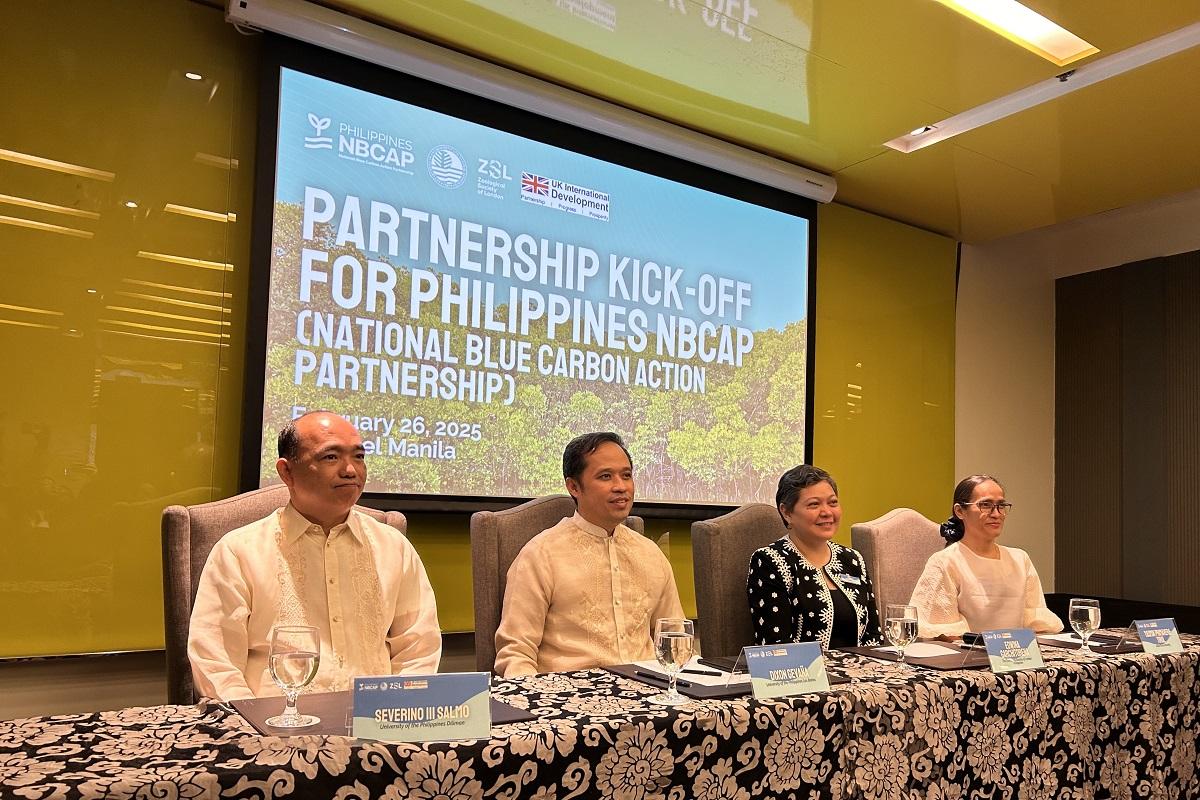Mangrove conservation urged in PH’s race against rising sea levels

A scientist is pushing for the planting and conservation of more mangrove forests to protect against the impact of rising sea levels, which is a consequence of climate change.
Dixon Gevaña, professor at the University of the Philippines-Los Baños College of Forestry and Natural Resources, warned on Wednesday that the country’s west coast is at risk of being submerged in knee-deep water by 2060.
“We have to move smart because we have to be future-proof. By 2060, in the analysis we wrote, many parts of the Philippines’ west coast will be submerged by about 0.4 meters above sea level,” he said in a press briefing at the launch of the National Blue Carbon Action Partnership (NBCAP) on Wednesday.
"Blue carbon" is the term for carbon captured by marine and coastal ecosystems. Carbon dioxide given off by different sources but particularly human activities can adversely affect the climate, but "carbon sinks" such as forests and blue carbon ecosystems—including coastal systems such as mangroves—can capture the carbon and reduce its impact. Furthermore, according to the National Ocean Service of the US National Oceanic and Atmospheric Administration (NOAA), while smaller than forests, blue carbon ecosystems "sequester this carbon at a much faster rate."
NBCAP, a project of the Department of Environment and Natural Resources (DENR) with the Zoological Society of London (ZSL) as the secretariat, seeks to bring in various stakeholders and experts to formulate policies and create a roadmap for the conservation of mangroves, salt marshes, and seagrasses—which are all part of the blue carbon ecosystem.
Gevaña added that it’s important to identify areas where to grow and cultivate mangroves for the long-term.
“Those are the sciences, those are the angles that we want to bring into the table to make sure that by 2060, although we have sea level rise, we still have mangroves to protect us. If we are too late, then it will be very, very difficult for us to restore those. That’s the problem and we are in a race,” he said.
Edwina Garchitorena, ZSL Philippines country director, said the NBCAP’s roadmap is targeted to be finished before June this year.
“Moving forward, we would really like to bring together the stakeholders and the experts to really fill in and flesh out the roadmap and that will go into a policy that the DENR will vet and eventually adopt,” she said in a press briefing.
“That policy and roadmap will guide us as to what blue carbon ecosystem conservation looks like for the Philippines and what opportunities are for enterprise, for finance, and for communications that will arise from blue carbon.”
Livelihood from blue carbon ecosystem
Meanwhile, Mindanao State University professor emeritus Wilfredo Uy said that conservation of blue carbon ecosystems could actually be a source of income as well.
For instance, Uy said the growing sea cucumbers could help in protecting seagrass beds as the former feeds on the latter.
“Maybe what we can do is let us make the seagrass ecosystem important as a source of livelihood. So how? Maybe you can look for organisms that are highly dependent on the seagrass ecosystem, that when you culture them, you have to protect first the seagrass to be able to grow them,” he said.
“So we are promoting the culture of sea cucumbers, because they are so highly dependent on the seagrass. In other words, if you want to grow your sea cucumbers, you have to protect your seagrass beds…We can actually marry aquaculture and conservation,” he added.
In 2022, Senator Loren Legarda called on the Philippine government to invest in blue carbon initiatives through the sustainable management of marine resources and marine-linked sectors.
Legarda said that building a blue carbon economy entails creating ocean sectors and businesses that are socially just, environmentally sustainable, and economically profitable.
"The risks are rapidly growing, not only for those in coastal communities, as climate change drives rising sea levels, warmer oceans and increasingly ferocious cyclones. We need to recalibrate our strategies on climate change adaptation, invest in blue carbon initiatives, and embrace the available solutions that nature presents to us," she said. — BM, GMA Integrated News

Need a wellness break? Sign up for The Boost!
Stay up-to-date with the latest health and wellness reads.
Please enter a valid email address
Your email is safe with us





